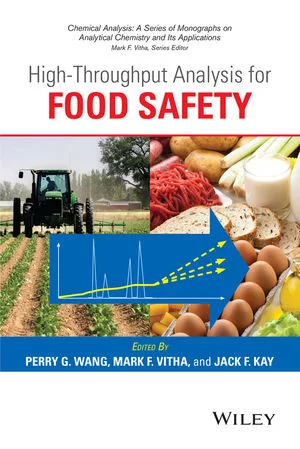The Latest on Gluten Allergy and Sensitivity

What are the current challenges for individuals with celiac disease and those with non-celiac gluten sensitivity in terms of purchasing food products?
The current challenges for individuals with celiac disease and non-celiac gluten sensitivity in terms of purchasing food products is being able to locate gluten-free products that were more readily available prior to the pandemic but may be harder to find now. Due to COVID-19, food product manufacturers have had to make decisions regarding what their top priorities are because they’ve had to implement social distancing and other measures within their facilities. They have had to reduce the number of people working, making it harder to produce everything previously made or as much of each item as previously produced. For example, if you have a company producing traditional gluten-filled food and they also have one gluten-free item, they were more likely going to choose to stop producing the gluten-free item.
What can food processors and retailers do to help those with these health concerns?
Food processors and retailers can help people with celiac disease and other gluten intolerances by keeping these consumers in mind. If you’re a retailer, ensure your shelves are stocked with a variety of gluten-free options across aisles. Food processors should also continue to produce and supply gluten-free items. Due to COVID-19, I understand it has been easy to stop making these items, or produce fewer of these products, but there are consumers who need those foods and rely on them for their health.
Are those with celiac and gluten sensitivity hesitant to dine at a foodservice establishment?
People with celiac disease and gluten sensitivity are always hesitant to dine at foodservice establishments.
If so, what are their primary concerns?
Looking for quick answers on food safety topics?
Try Ask FSM, our new smart AI search tool.
Ask FSM →
The primary concern for dining at foodservice establishments for those with celiac or gluten sensitivity is the risk of cross-contact from gluten-containing ingredients. These consumers have fears because they can’t see how their food is being prepared and if kitchen staff are preparing their food safely. For example, they may want to know answers to questions like: Is the food being prepared on a contaminated surface that wasn’t cleaned? Is the gluten-free pasta being cooked in water that was already used for regular pasta? If they’re asking the servers questions like these, sometimes they are not receiving answers that make them feel confident.
How can restaurants address these issues and help put diners’ concerns at ease?
Restaurants can address the concerns of gluten-free consumers and put their minds at ease by establishing gluten-safe policies and procedures and investing in employee training in both the front and back of the house. The servers in the front must understand what’s happening in the back of the house and the policies and procedures, so they can easily explain these practices to guests. One way to fast track implementing these changes is through entering a validation program like the Gluten-Free Food Service (GFFS).
What programs and resources does GIG offer to the food industry to help address these issues?
GIG offers two different programs for the food industry to address the needs of gluten-free consumers: one for manufacturers and one for foodservice establishments. Our Gluten-Free Certification Organization (GFCO) has more than 60,000 gluten-free products certified. Gluten-free products carrying the GFCO mark have 10 parts per million (ppm) or less of gluten, which is stricter than the 20 ppm FDA regulation for gluten-free products. GFCO is also great for foodservice establishments looking for gluten-free ingredients.
For foodservice establishments, we operate the GFFS validation, which provides an oversight for preparing and serving gluten-free foods. Gluten-free consumers trust and feel less hesitation when visiting establishments validated by GFFS because they know the establishment has been audited and follows best practices for serving gluten-free food.
Can you elaborate on the Coach’s program? What is a GFFS Safe Spot?
Safe Spots have been validated by GFFS to safely serve gluten-free food. These establishments have gone through our audit and it’s been determined they are following all the best practices we require, including having a training program in place for staff. Additionally, they agree to be audited every year.
The GFFS Coaches Program is an extensive training program to help restaurants in local communities become Safe Spots. After training, our coaches meet with owners and managers of restaurants to become a part of the Safe Spot program. If a facility decides to proceed, the coach will help them establish policies and procedures and a staff training program. The coach guides them through the whole process and performs the audit.
What would your primary message to the food industry be in regard to helping those with food allergies and gluten intolerance?
My primary message to the food industry is for them to know there is a large number of people who are eating gluten-free for many reasons and this can benefit both their businesses and the gluten-free community. In fact, new research from GIG and New Hope Network reveals that 23%—nearly a quarter of U.S. adult shoppers—reported gluten avoidance in their households. When restaurants, foodservice establishments and food manufacturers offer quality, safe gluten-free foods, they can increase their revenues in this growing market while meeting the important health and wellness needs of this major consumer segment.
Lindsey Yeakle is the Gluten-Free Food Service Program Manager, Food Safety, for the nonprofit Gluten Intolerance Group (GIG). She has a culinary history working at 4-star- and 4-diamond-rated restaurants. A celiac disease diagnosis encouraged her to attend culinary school at Indiana University of Pennsylvania Academy of Culinary Arts. In June 2016, Yeakle decided to use her background and education to help the gluten-free community by working with GIG.








